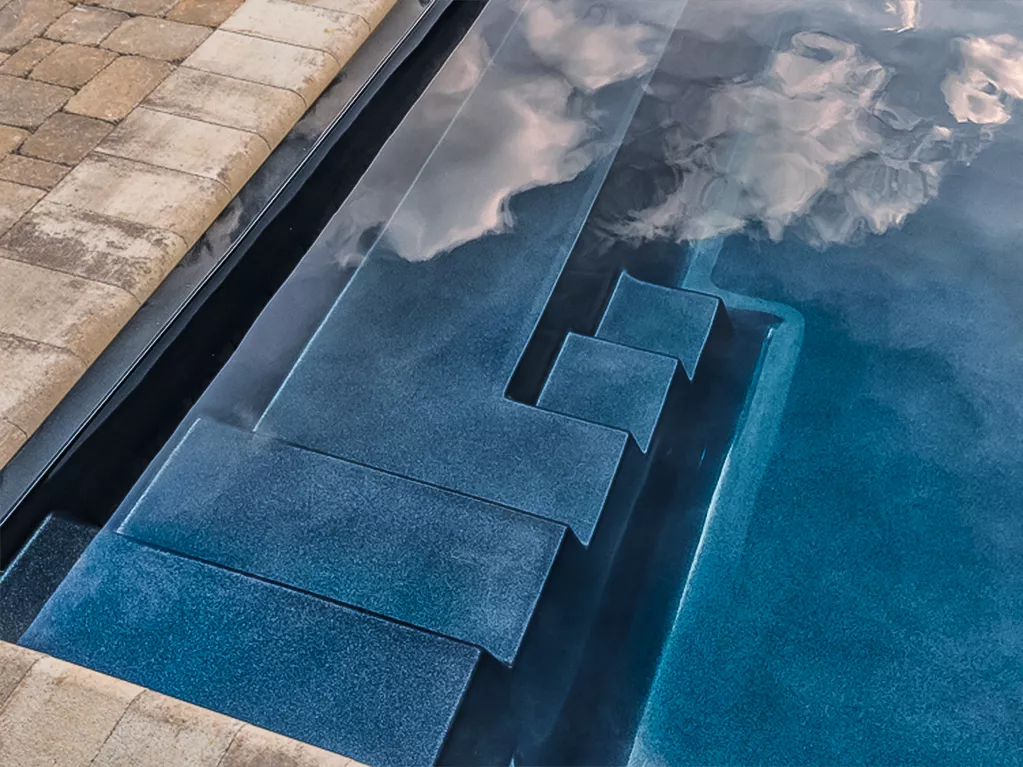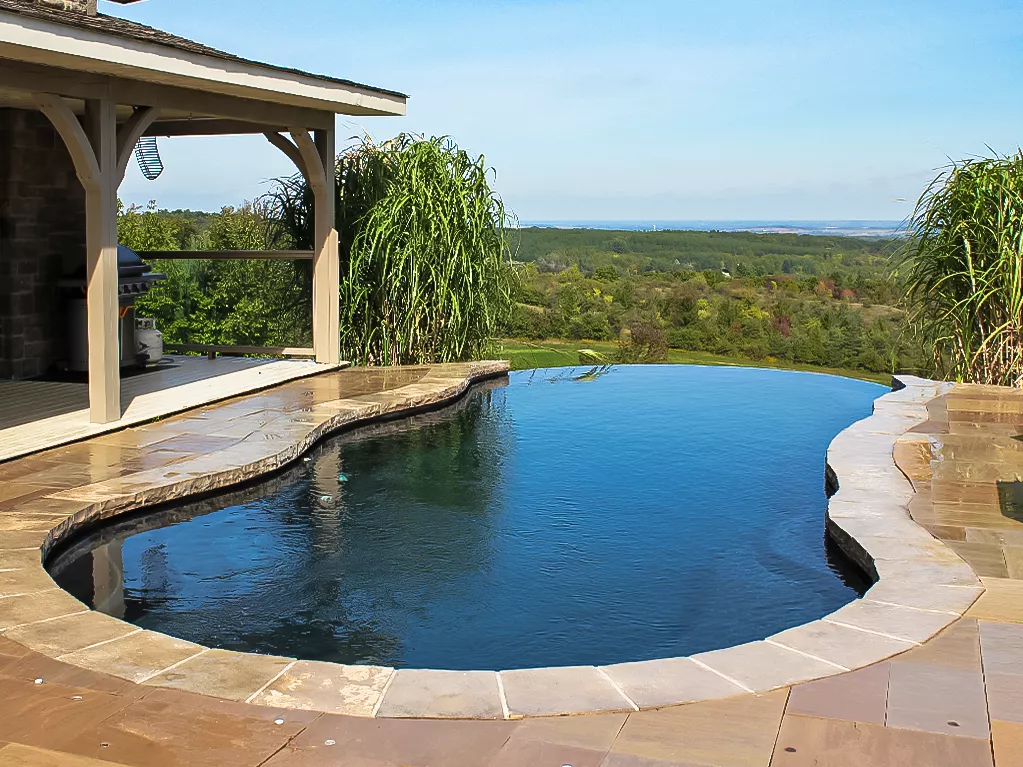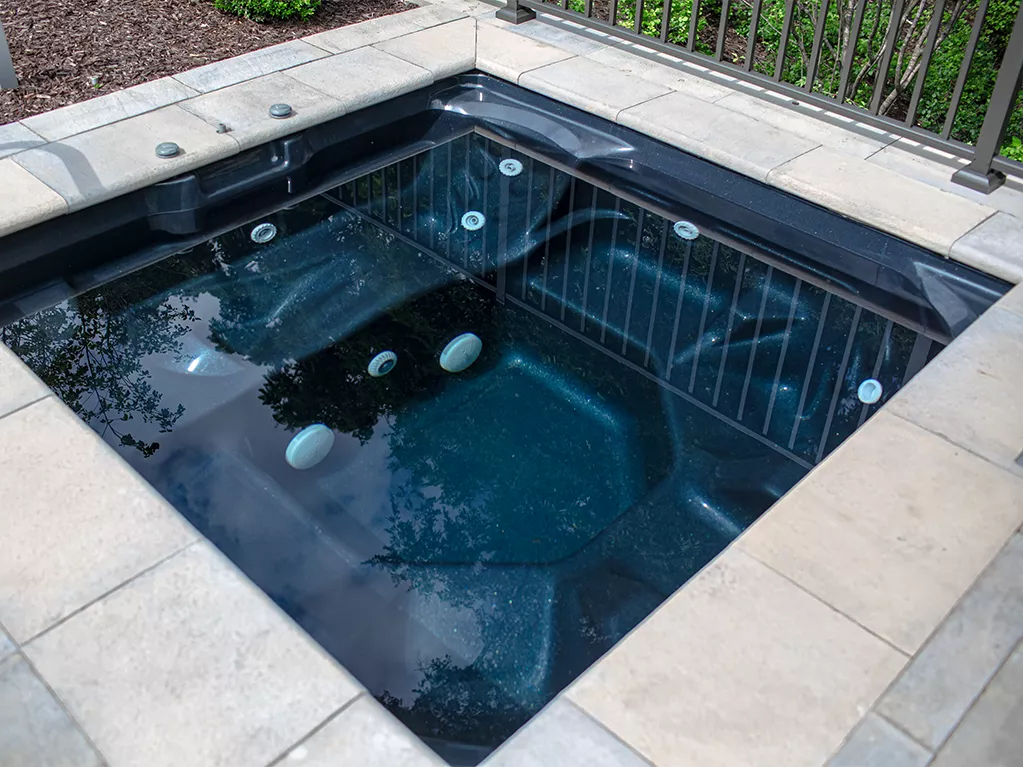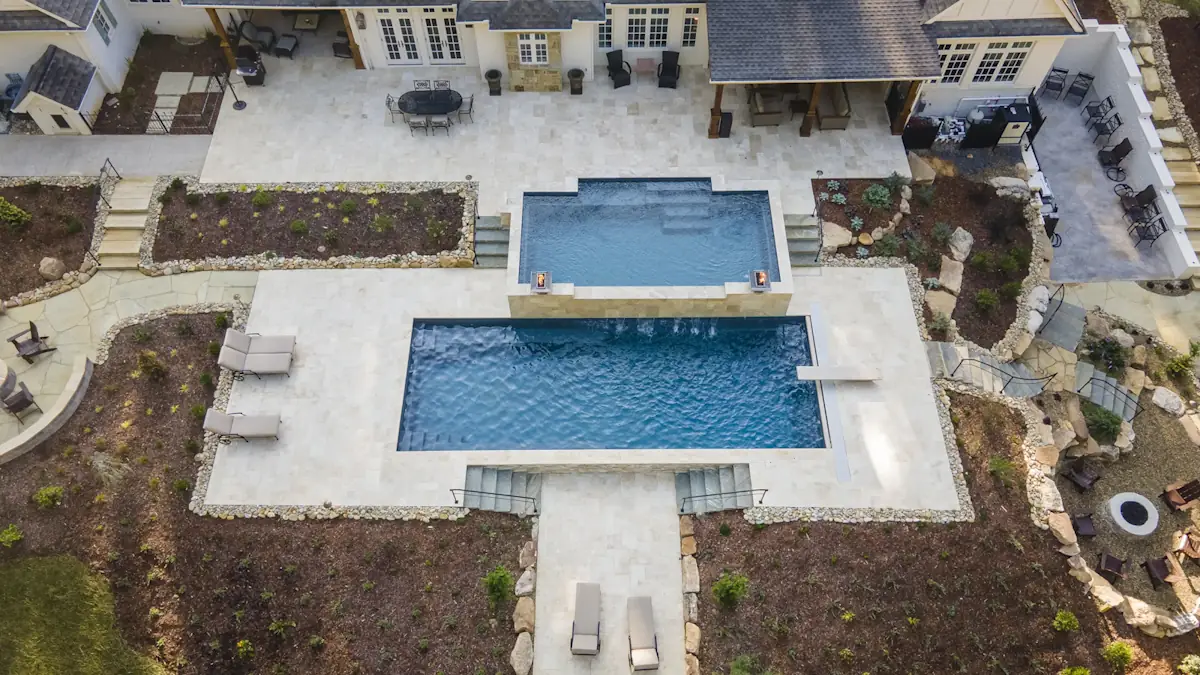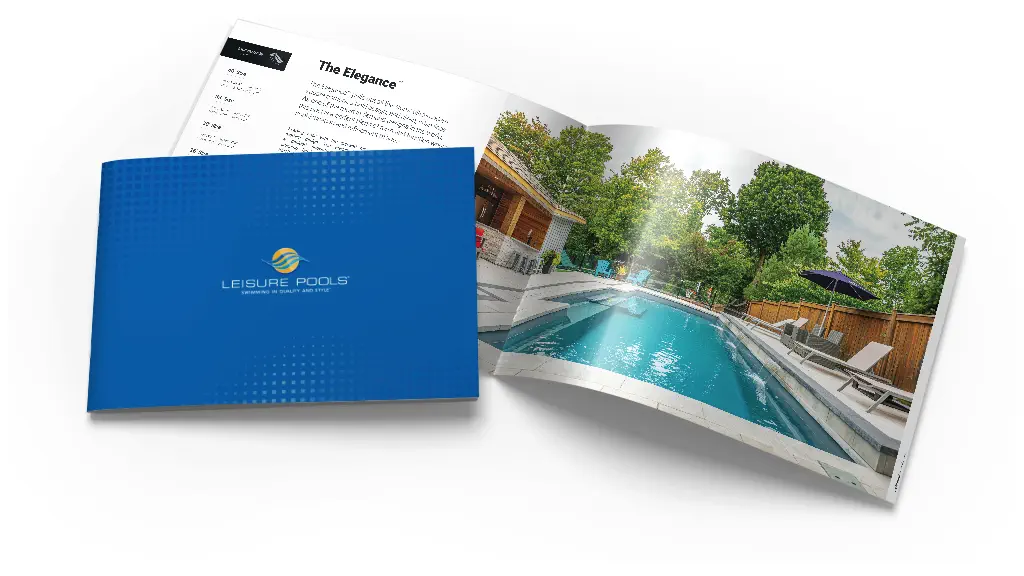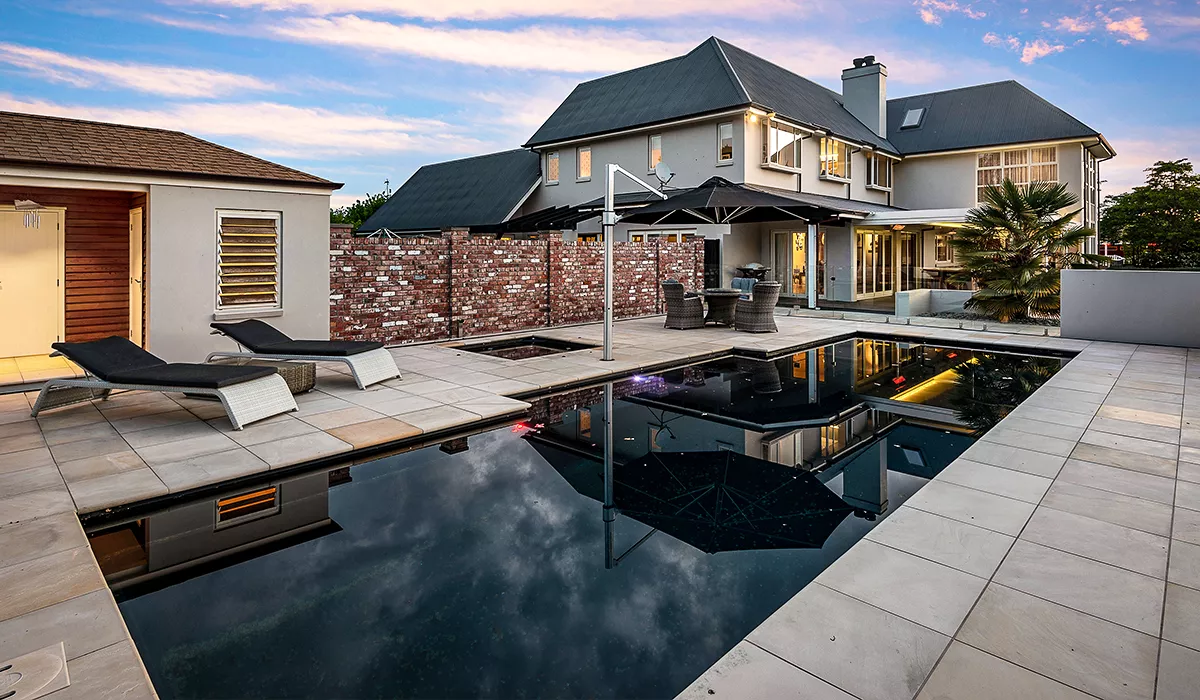
Should I Get a Black Bottom Pool?

Are you considering getting an inground backyard fiberglass swimming pool with a dark bottom? Choosing the color of your swimming pool is a significant decision. As such, if a black bottom pool is high on your list of “must haves,” then it is important to understand how a dark surface color may differ from lighter colored swimming pools, not only in terms of aesthetics but also from a functional standpoint.
What is a Dark Bottom Pool?
A dark bottom pool is basically what it says it is: a swimming pool with a dark surface. This could be along the lines of a deep blue, gray, or, yes, even black. While it may not necessarily be the first choice of pool colors – that honor usually goes to blue – it does have its own niche among certain pool owners.
There’s a good reason for this. While dark pool colors are nothing new, they are beginning to see a surge in popularity. However, before we proceed any further, please be advised that in certain municipalities across the country, dark bottom pools are prohibited. The main reason is because the dark color distorts depth perception. Therefore, please check with your local municipality before deciding on this particular color for your pool.
Diving into the Dark
Choosing a color for your inground backyard fiberglass swimming pool is a significant decision, and not one to be taken lightly (no pun intended!). After all, it lasts the entire lifetime of your pool, which is a pretty long time. Fiberglass pools are well-known for their longevity, so you will have to appreciate and enjoy the color you choose for at least two decades, if not longer.
Actual black swimming pools, also known as black bottom pools, are truly the epitome when it comes to dark pools. If black is not the color for you, but you are still drawn to a darker pool color, you might consider a gray pool, which can run from a very deep and dark gray to a lighter hue.
Interesting tidbit: no matter how dark the color of your pool is, the water will always naturally carry a blue hint.
Then there is the color blue. A dark blue pool may just have the eye-catching appeal you desire without necessarily going full-on black. With so many shades and varieties of blue, you are sure to find the hue you want to complement your backyard preferences.
One of Leisure Pools’ most dramatic and bold colors is Ebony Blue. Its gorgeous color allows light to reflect off its surface producing an exciting showcase of contemporary style and modern design. At Leisure Pools, we use the AquaGuard fiberglass pool color range, which gives you the freedom to customize and stylize your Leisure Pools swimming pool. Regarded as the art of the swimming pools, our expressive line of premier gelcoat colors have a distinctive sparkle and shine. However, they are also chemical and blister resistant, setting the standard for high quality UV.
Although it might not be on your radar, you might even want to consider a green pool. This is an ideal color selection for lagoon pools and other pool designs that rely on natural features.
Fiberglass, Concrete, and Vinyl Liner Pools with a Dark Surface
No matter the type of pool construction material, there will be a variety of color options available. However, there are a few differences between fiberglass, concrete, and vinyl liner pools.
Fiberglass Dark Bottom Pools
Gelcoat colors for fiberglass pools come in a variety of shades, including blue, gray, and black options. Fiberglass pools also provide a bit of extra pizzazz in terms of sparkle and shine. They also tend to offer the most vibrant pool colors.
Concrete Pools with a Dark Surface
Concrete pool plaster can be dyed most any color. However, it might not be as colorful and speckled as a fiberglass pool and will need resurfacing in about 10 years.
Vinyl Liner Pools with a Dark Surface
Vinyl liner pools come with a vast menu of pool shades and colors, with many of them offering patterns, such as marble, tile, and mosaics. However, excessive exposure to chlorine can cause the vinyl liner to fade. As such, your dark colored swimming pool may become lighter sooner than you anticipated.
On the flip side, you will have to replace the liner in a vinyl liner pool every five to 10 years. Therefore, if you are not satisfied with your color, down the road you can change it.
Will Your Black Bottom Pool Be Warmer?
Short answer: yes. Compared to their lighter counterparts, darker pools absorb more heat from the sun, thereby increasing the overall temperature of the water. Just as a darker car will be considerably hotter on the inside than a lighter car when left out in the sun all day, the water in a darker pool will be a few degrees warmer than, say, a sandstone-colored pool. The darker the color, the warmer the water will be.
Are Pools with a Dark Surface More Expensive?
The cost of a dark bottom pool may vary depending on manufacturer and/or dealer. For complete information on the costs associated with style and design wishes for your inground backyard fiberglass swimming pool, contact a local dealer. They will be happy to assist you in finding the price point most suitable for your budget and preferences.
At Leisure Pools, we encourage you to live a life of leisure, and that means enjoying your fiberglass swimming pool from top to bottom. Our showcase of dazzling color options is sure to inspire. For information and/or assistance in making the best color selection for your pool, contact your local dealer. To find a local pool supplier near you, call 855-857-7527 or go to our website.
